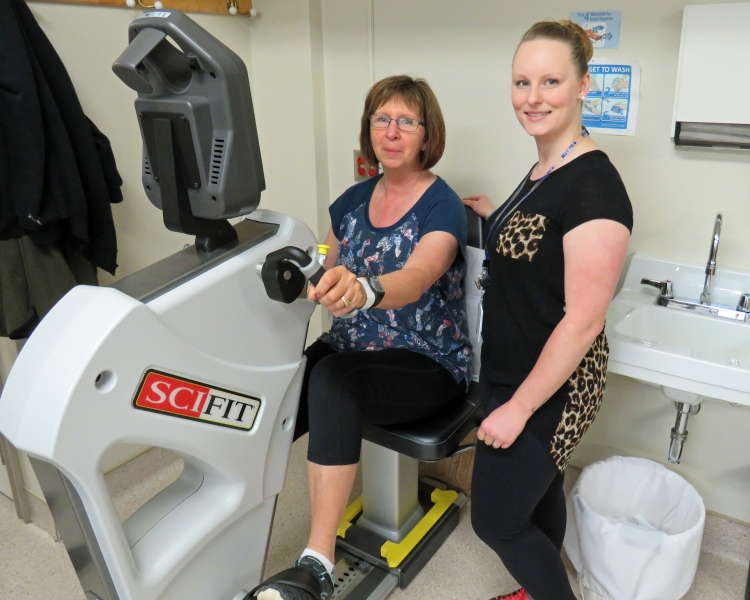

What is Breast Screening or OBSP?
What is diagnostic Mammography?
Both are done at St. Francis Memorial Hospital.
OBSP
The Ontario Breast Screening Program encourages women to take charge of their own health. Women, 40 years of age and and who have never had breast cancer, can self-refer for a mammogram, by phoning to make their own appointments. Did you know 75%-80% of all breast cancers occur in women with no risk factors, other than being a woman?
St. Francis Memorial and Renfrew Victoria Hospitals voluntarily amalgamated their administrations, under the direction of Chief Executive Officer Randy Penney, in December of 1998. Some of the benefits of this successful partnership are witnessed in the opening of the Ontario Breast Screening and Mammography Program at SFMH, in October 2000.
St. Francis Memorial Hospital OBSP/Mammography service is an affiliate of the RVH Ontario Breast Screening Program and is accredited with the Canadian Association of Radiologists. Staff at SFMH are specially trained Breast Imaging.
Both hospitals are committed to bringing services closer to home, and St. Francis Memorial is proud to offer this program in a rural setting.
To book an appointment for OBSP, or for more information, please call 1-800-916-6277.
Mammography
What is a Mammogram?
A mammogram is an x-ray picture of the breasts. It is used to find any changes in the breast that may be noncancerous (benign) or cancerous (malignant) disease.
How the Test is performed?
You will be asked to undress from the waist up and will be given a gown to wear.
One breast at a time is rested on a flat surface and the x-ray image is taken. A device called a compression paddle will press gently against the breast to help spread the breast tissue.
The x-ray pictures are taken from several angles. You may be asked to hold your breath as each picture is taken.
Sometimes you will be asked to come back at a later date for more mammogram images. This does not always mean you have breast cancer. Rather, the doctor may simply need to recheck an area that could not be clearly seen on the first image.
Digital mammography is new technology that allows the x-ray images of the breast to be viewed immediately on the computer by the Technologist and Doctor. These computer images allow the doctor to manipulate the image, making it larger or zooming in on an area. This technology improves clarity and accuracy and has a faster reporting time.
How to Prepare for the Test
Remove deodorant, perfume, powders, or ointments under your arms or on your breasts on the day of the mammogram. These substances may interfere with the results of the x-ray. Remove all jewelry from your neck and chest area. Tell your health care provider and the radiologist if you are pregnant or breastfeeding.
How the Test Will Feel
The image detector may feel cold to touch. When the breast is gently pressed down, you may have some discomfort. However, the compression of the breast is required to get good images.
Why the Test is performed?
Normal Results Mean
Breast tissue that shows no signs of a mass or calcification is considered normal.
Abnormal Results Mean
Most abnormal findings on a screening mammogram turn out to be benign or nothing to worry about. However, any new findings or changes must be further evaluated.
A Radiologist, a doctor who reads x-rays, may see the following types of findings on a mammogram:
The American College of Radiology (ACR) has developed a grading system for radiology doctors to use when they report the results of a mammogram. Terms you may hear your doctor use include:
Sometimes the following tests are required:
Risks
The level of radiation from mammography is very low. If you are pregnant and need to have an abnormality checked, your belly area will be covered and protected by a lead apron.
Routine screening mammography is not done during pregnancy or while breast-feeding.
How to make an appointment - PLEASE CALL